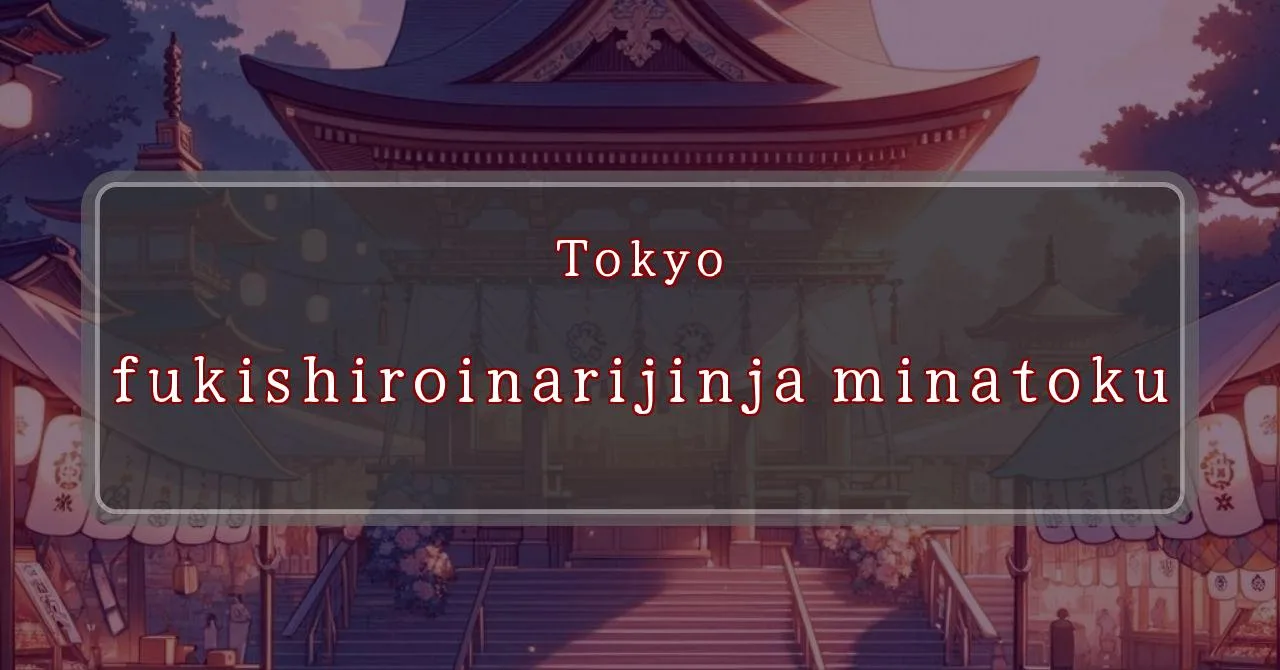Vibrant hues illuminate the night at Fukishiro Inari Shrine
Basic Information
Fukishiro Inari Shrine is a Shinto shrine located in the Toranomon district of Minato, Tokyo, Japan.
- Address: 4-1-3 Toranomon, Minato-ku, Tokyo 105-0001
- Phone Number: 03-3431-2111
- Access: 3-minute walk from Kamiyacho Station on the Hibiya Line, or a 1-minute walk from Toranomon Station on the Ginza Line
- Festival Days: April and November of each year
Main Events and Attractions of the Festival
The Fukishiro Inari Shrine Festival is held twice a year, in April and November. The festival features a variety of events and attractions, including:
Mikoshi Procession
The mikoshi procession is the main event of the festival. A mikoshi is a portable shrine that is carried through the streets by a group of people. The Fukishiro Inari Shrine mikoshi is a large and elaborate structure, and it is carried by a team of over 100 people.
Shishimai Dance
The shishimai dance is a traditional Japanese dance performed by a lion-like creature. The shishimai is believed to bring good luck and fortune, and it is often performed at festivals and other special events.
Kagura
Kagura is a traditional Japanese dance and music performance that is often performed at Shinto shrines. The kagura at the Fukishiro Inari Shrine Festival is performed by a group of young women, and it tells the story of the shrine’s founding.
Food Stalls
A variety of food stalls are set up at the festival, selling a variety of Japanese dishes, such as takoyaki, yakisoba, and okonomiyaki.
Games and Activities
There are also a number of games and activities for children at the festival, such as face painting, balloon animals, and ring toss.
Blessings and Deities
Fukishiro Inari Shrine is dedicated to the following deities:
- Ukanomitama no Kami: The deity of food and agriculture
- Susanoo no Mikoto: The deity of storms, the sea, and agriculture
- Oomikami no Kami: The deity of food, clothing, and shelter
The shrine is said to bring good luck in the following areas:
- Business and commerce
- Agriculture and fishing
- Health and longevity
- Safe childbirth
- Good fortune in marriage
Origin and History
The exact date of Fukishiro Inari Shrine’s founding is unknown, but it is believed to have been established in the early 17th century. The shrine was originally located in a different part of Tokyo, but it was moved to its current location in 1928.
The shrine has a long history of serving the local community. During the Edo period (1603-1868), the shrine was a popular destination for pilgrims and travelers. The shrine was also used as a meeting place for local residents.
Tips and Notes for Visitors
Here are some tips and notes for visitors to Fukishiro Inari Shrine:
- The shrine is open daily from 9:00 AM to 5:00 PM.
- Admission to the shrine is free.
- Photography is permitted within the shrine grounds.
- There is a small gift shop on the shrine grounds where visitors can purchase souvenirs.
- The shrine is located in a quiet residential neighborhood. Please be respectful of the local residents.
Parking Information
There is no parking lot at Fukishiro Inari Shrine. Visitors are advised to use public transportation or park in a nearby parking garage.
Popular Stalls and Food Carts in Recent Years
| Type of Stall | Description |
|---|---|
| Takoyaki | A staple at Japanese festivals. Characterized by a crispy outside and a creamy inside. |
| Jaga Butter | A simple yet popular snack of hot potatoes lavishly topped with melted butter. |
| Baby Castella | Small castella cakes, sweet and fluffy treats enjoyed by children and adults alike. |
| Grilled Ayu with Salt | Fresh ayu fish grilled whole with salt, a savory taste of Japanese summer. |
| Shaapin | A unique gourmet item influenced by foreign cuisine, with a chewy skin wrapping the filling. |
| Okonomiyaki | A Japanese grilled dish where you often choose your own ingredients for a personalized flavor. |
| Cotton Candy | A fluffy, sweet snack that’s extremely popular with children. |
| Chocolate Banana | A banana coated in chocolate, a fun and visually appealing dessert. |
| Kushiyaki | Various types of ingredients skewered and grilled, an easy-to-enjoy snack. |
| Yakisoba | Fried noodles mixed with a special sauce, a fast food favorite in Japan. |



